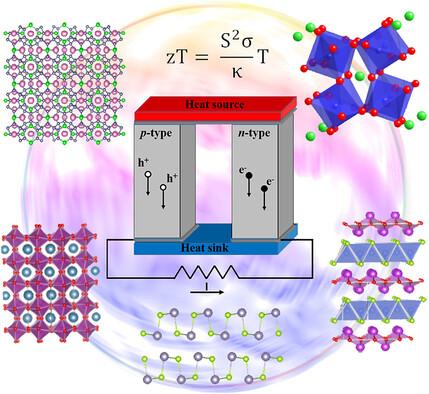Perspective on Crystal Structures, Synthetic Methods, and New Directions in Thermoelectric Materials
引用次数: 0
Abstract
This review explores the state‐of‐the‐art of thermoelectric materials, covering different crystalline structures and material families (e.g., chalcogenides, Zintl phases, skutterudites, clathrates, oxides, half‐Heusler, organic–inorganic composites, metal–organic frameworks, and silicides). It examines their corresponding thermoelectric properties while considering the synthesis methods employed, paying significant attention to those that particularly follow sustainable routes. Additionally, the work addresses current challenges in the field, such as enhancing stability at high temperatures and reducing manufacturing costs. The understanding gained in this field opens avenues for designing more efficient and sustainable devices to convert waste heat into electrical energy, thereby advancing cleaner technologies.

透视热电材料的晶体结构、合成方法和新方向
这篇综述探讨了热电材料的最新发展,涵盖了不同的晶体结构和材料家族(如钙钛矿、Zintl 相、矽卡岩、氯化物、氧化物、半休斯勒、有机-无机复合材料、金属-有机框架和硅化物)。研究在考虑所采用的合成方法的同时,还考察了它们相应的热电特性,并对那些特别遵循可持续路线的方法给予了极大关注。此外,该研究还探讨了该领域当前面临的挑战,如提高高温稳定性和降低制造成本。通过对这一领域的了解,我们可以设计出更高效、更可持续的设备,将废热转化为电能,从而推动清洁技术的发展。
本文章由计算机程序翻译,如有差异,请以英文原文为准。
求助全文
约1分钟内获得全文
求助全文

 求助内容:
求助内容: 应助结果提醒方式:
应助结果提醒方式:


